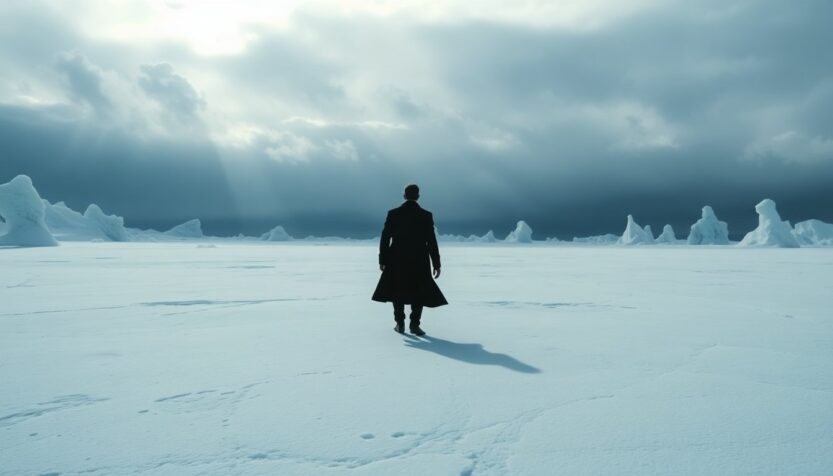Guillermo del Toro’s adaptation of Frankenstein presents a novel interpretation of Mary Shelley’s classic narrative, culminating in an unexpected ending for those familiar with previous renditions. Featuring prominent actors such as Oscar Isaac, Mia Goth, and Jacob Elordi, this film redefines the themes of creation, guilt, and redemption. The narrative opens at its conclusion, with scientist Victor Frankenstein in pursuit of the creature he animated, traversing a desolate, icy landscape.
As Victor races against time, he encounters a captain trapped in the ice, who shares his harrowing story while anticipating the inevitable confrontation with his creation. Through a series of flashbacks, viewers witness the critical events that led to this moment, including the ongoing struggle for power between creator and creation. The film’s climax raises profound questions about sacrifice and accountability: can Victor attain redemption, or will his creature seek vengeance?
The creature’s journey
In a significant twist, the creature ultimately reveals a capacity for growth and compassion. After boarding the ship where Victor lies recuperating, he reconciles with both the captain and Victor, marking a pivotal shift in their relationship. Utilizing his extraordinary strength, the creature liberates the ship from its icy prison, enabling the crew to return home safely.
Though this act of selflessness may appear triumphant, it is accompanied by a profound sense of melancholy. Unlike Shelley’s original portrayal, this creature possesses enhanced regenerative abilities, suggesting a hopeful future rather than a tragic conclusion. As he walks away into the vastness of the frozen horizon, viewers are left with a bittersweet feeling, underscoring the complex nature of his existence.
Comparing the endings
In contrast to del Toro’s version, Mary Shelley’s original Frankenstein concludes with the creature willingly marching towards his demise, embracing the notion of his own funeral pyre in search of peace for his tormented soul. While del Toro’s creature steps into an uncertain but potentially hopeful future, Shelley’s creation acknowledges the finality of his fate. This divergence between the two narratives highlights themes of redemption and forgiveness that resonate throughout the film.
The tragic fate of Victor Frankenstein
Unfortunately, Victor does not share the same fate as his creation. His journey concludes with death aboard the ship, succumbing to injuries sustained during his relentless pursuit. However, before his passing, he achieves a moment of reconciliation with the creature, recognizing his role as a father figure and expressing remorse for his failures.
This evolution in Victor’s character arc adds depth to the story, emphasizing the tragedy of a man who aspired to play God but was unprepared for the accompanying responsibilities. The film poignantly portrays both Victor and the creature as victims of their own decisions, weighed down by guilt and regret. The deaths surrounding them, particularly that of Elizabeth, underscore the high cost of their tragic narrative.
A nod to literary history
In the final moments of the film, viewers encounter a poignant quote from Lord Byron’s Childe Harold’s Pilgrimage, linking del Toro’s work back to its literary origins. Byron’s influence on Mary Shelley and the broader literary movement of the time is evident, as the challenge to compose a ghost story during a rainy summer ultimately led to the creation of Frankenstein.
This historical context enriches the viewing experience, providing a meta-commentary on the nature of creation and the responsibilities it entails. The film’s conclusion serves not only as a closure to Victor and the creature’s saga but also as a reminder of the ongoing dialogue between creators and their creations. By referencing Byron, del Toro pays homage to the literary lineage that gave rise to these iconic characters.
Ultimately, Guillermo del Toro’s adaptation of Frankenstein offers a fresh perspective on a timeless narrative, delving into themes of parental failure, the quest for redemption, and the consequences of creation. The conclusion, while bittersweet, leaves audiences reflecting on the complexities of the human experience, marking it as a memorable interpretation of Shelley’s original work.

